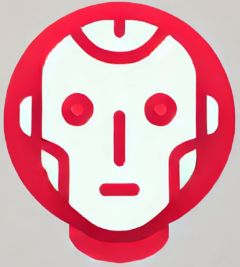AI App Development Without Code
In 1985, Steve Jobs introduced the first Macintosh with a simple message: “The people who are crazy enough to think they can change the world are the ones who do.” Fast forward a few decades, and that same spirit fuels today’s innovators who are reimagining software creation without writing a single line of code. AI app development without code is no longer a futuristic dream — it’s a powerful movement transforming the tech landscape before our eyes.
The No-Code Revolution Enhanced by AI
The explosion of no-code platforms in recent years has already democratized software development, enabling entrepreneurs, business professionals, and creators to build web and mobile applications without traditional programming skills. But the next leap? Injecting artificial intelligence into that process.
Tools like Adalo, Glide, and Bubble have laid the groundwork, but the integration of AI offers supercharged features such as natural language commands, predictive analytics, and intelligent workflows. AI-powered no-code platforms allow users to describe the app they want in plain English — and watch algorithms design the UI, automate logic, and optimize performance in real time.
Benefits of AI-Powered No-Code Development
Here’s how AI makes app development more accessible and efficient:
- Speed to Market: Ideas can become functional apps in a fraction of the traditional development time.
- Lower Costs: Businesses no longer need full engineering teams, cutting down on labor costs.
- Greater Accessibility: Innovators without technical backgrounds can now turn their ideas into reality.
- Continuous Optimization: AI can monitor user data and behavior to automatically refine app functionality.
Real-World Use Cases Making Waves
Startups and enterprises alike are leveraging AI app development without code to disrupt industries:
- Healthcare Platforms: AI helps create patient-facing apps with built-in symptom checkers and appointment managers.
- E-commerce Solutions: Non-developers build e-stores with dynamic pricing algorithms powered by AI.
- Education Tools: Teachers develop custom quiz generators and digital classrooms without writing code.
For example, Bubble’s integration with OpenAI enables you to build smart, responsive apps that adapt to users’ needs — all with zero programming experience.
Challenges and What’s Next
Despite its promise, AI-powered no-code development faces hurdles. These include:
- Limited Customization: Complex backend features may still require developer input.
- Data Privacy: AI tools require data to learn, raising questions about user confidentiality and ethics.
- Skill Misconceptions: While coding isn’t required, understanding logic, UX, and processes remains key.
Looking ahead, hybrid models that combine low-code with AI will likely bridge functionality gaps. We’ll also see increased AI-driven collaboration, where human creativity and artificial intelligence work side-by-side to automate not just design and development—but testing, debugging, and deployment too.
Conclusion: Redefining Who Gets to Build
The future of AI app development without code is not about replacing developers—it’s about expanding who gets to create. It redefines what’s possible for startups, educators, small businesses, and even hobbyists. As platforms become even more intelligent, the barriers between imagination and implementation continue to dissolve. One thing is certain: the next wave of apps will be built by anyone bold enough to ask, “What if?”
